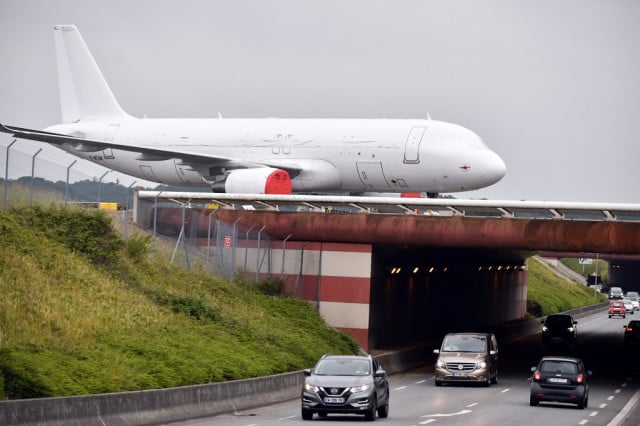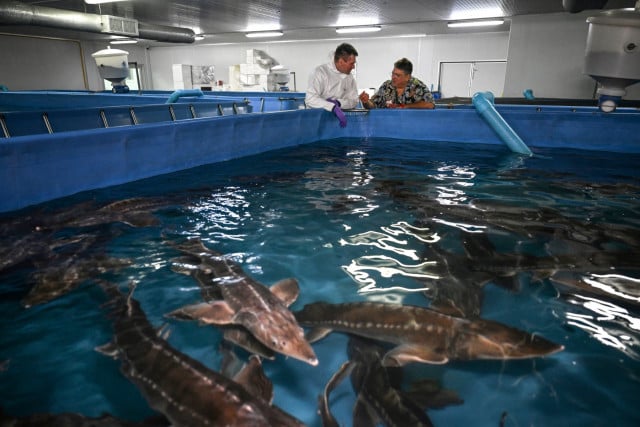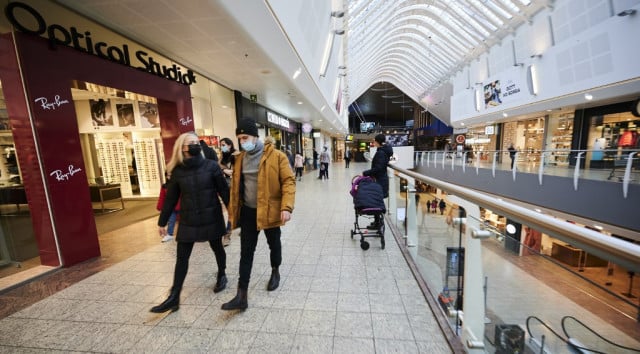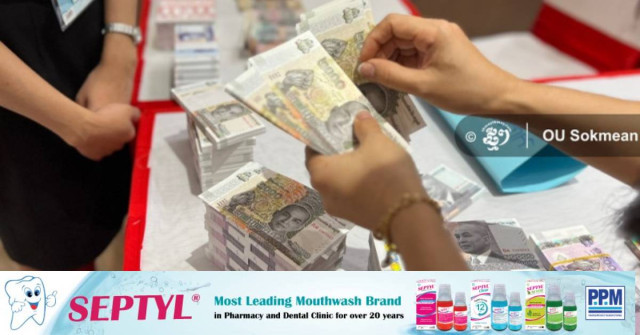Mondulkiri Gold Mine Gets Go Ahead Despite Environmental Risks

- By Phoung Vantha
- June 21, 2021 5:21 PM
Fears that history may repeat itself and lead to yet more contamination of Cambodia’s rivers has been offset by the estimated $40 million the government will receive annually from Renaissance Minerals
PHNOM PENH--Minister of Mines an Energy Suy Sem attended an official launch ceremony for Renaissance Minerals’ gold mining operation in the Okvau area of Mondulkiri Province’s Keo Seima District.
The Australian mining company, Renaissance Minerals, has reportedly spent 14 years exploring Cambodia’s northern provinces but will finally begin mining, refining and manufacturing gold with an expected yield of 3 tons of pure gold each year for eight consecutive years.
Hun Sen has previously valued the predicted gold resources unearthed at $185 million per year, of which some $40 million is expected to go to the state through taxes and royalties, but while Hun Sen has said this money will be used for economic and social development, no specifics have yet been given.
But what has been dubbed “Cambodia’s first industrial gold mine” is neither the first successful gold mining operation in the country nor has it won over the trust of activists, who say that the lack of transparency could lead to environmental and public health crises witnessed by previous gold mining expeditions.
Heng Kimhong, program manager for research and advocacy for the Cambodia Youth Network said that while he congratulated Cambodia for the economic benefit Renaissance Minerals’ operations could bring, he noted that gold mining is highly susceptible to corruption.
“I want to see the level of transparency of the information publicly available regarding the revenue that Cambodia will get and how much went to the company, then how the government has divided the income from the gold mine?” he said.
The fact that Renaissance Minerals’ licenses have been granted within the Keo Seima Wildlife Sanctuary boundaries—although outside of the core conservation areas—has prompted fears that the Australian mining company, like previous gold mining operations, could create similar environmental catastrophes and social impacts.
An environmental and social impact assessment (ESIA) conducted by Australian consultants Earth Systems and E&A Consultants—a Cambodian consultancy firm that lists Hun Sen’s nephew Hun To, the controversial Chinese Union Development Group, along with Chip Mong and a number of government institutions as its clients—consulted with authorities, community representatives and World Wildlife Fund in July 2016.
The ESIA stated that “The impact of the construction phase on the physical landscape is considered to be high, but will be limited in duration,” with the duration being the eight years the mine is intended to be operational.
One notable concern was the release of sediment to the Prek Te River, which flows from Mondulkiri Province through Kratie Province into the Mekong River, although this concern was based on the potential structural failure of the sedimentation dams that will be constructed to support the gold mine.
The report also noted that the mining operation would result in “permanent landform changes.”
“In addition to sediment control, containment and management of site water will be critical during operations to prevent the potential release of pollutants such as hydrocarbons, oil and grease, process chemicals (including cyanide), and salinity and heavy metals (including arsenic) from waste rock, tailings and pit wall rock,” the EISA read.
This comes after previous gold mining operations in Cambodia have been accused of stealing land from villagers, killing those who resisted and then going on to accidentally contaminate the Prek Te River that led to poisoning which killed 13 people in Kratie Province and saw some 300 others get sick in May 2018.
While the Ministry of Health and Hun Sen himself dismissed the idea that the poisoning was related to a chemical spillage from the gold mine, activists—including Mother Nature Cambodia—accused the government of covering up the impact of questionable mining companies.
The company believed to be responsible, Delcom Cambodia Pte Ltd., reportedly had links to Hun Sen’s youngest sister Hun Seng Ny and General Hing Bun Heang—who served as commander of the Prime Minister Bodyguard Unit and was sanctioned by the United States Treasury Department in 2018 for his alleged role in the 1997 grenade attack that left at least 16 dead and 150 wounded.
So while diplomats and the Cambodian government are keen to tout Renaissance Minerals as the first gold mining operation in Cambodia, there remains fear that history may repeat itself and that sedimentation dams fail to prevent chemicals from entering the river.
While localized hydrology risks are considered, the overall impact was regarded as low by the consultants who conducted the EISA, but the loss of approximately 485 hectares of fauna and wildlife habitat is deemed unavoidable.
Some of the last known habitats of the green peafowl, which is listed as “Endangered” by the International Union for Conservation of Nature (IUCN), are found in Cambodia and Vietnam, but is widely believed to extinct almost everywhere else except for portions of Myanmar.
The Renaissance Minerals mine will also further reduce habitat of the northern pig-tailed macaque, according to the EISA, which while not endangered has seen its native Southeast Asian habitats decrease significantly in recent years. The sambar deer are also expected to impacted by the gold mining operation and despite being found across India and much of Southeast Asia, the IUCN has listed them as “Vulnerable” with a decreasing population globally.
According to the EISA, wildlife will be at risk from the increased number of vehicles, which could lead to collisions, as well as habitat loss, poisoning, loss of natural resources such as drinking water and disturbances from blasting at the mine.
With all the risks weighed up and the “short-term and spatially confined impact” assessed, the EISA for Renaissance Minerals concluded that “The Project has been designed to minimise impacts and risk on key environmental values and social values, particularly the Phnom Prich Wildlife Sanctuary and the Prek Te River.”
Additional reporting by Gerald Flynn















